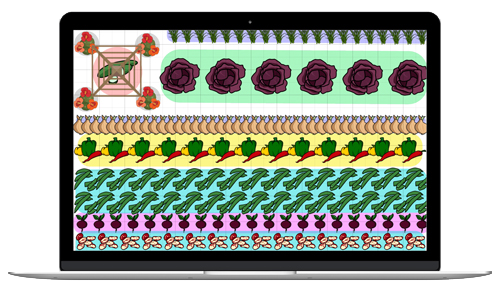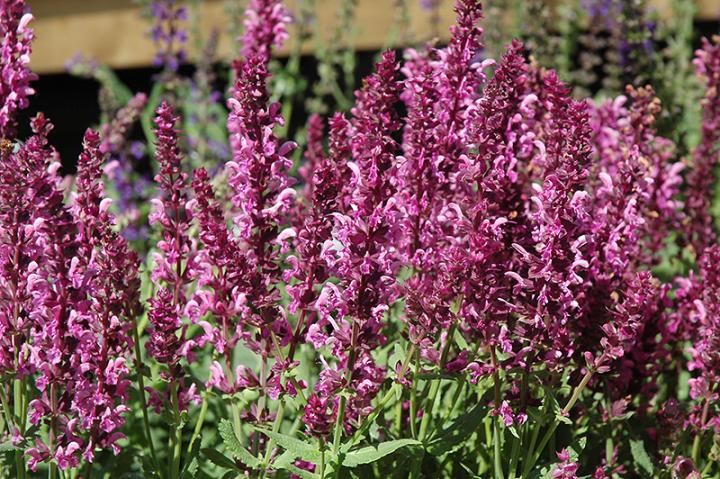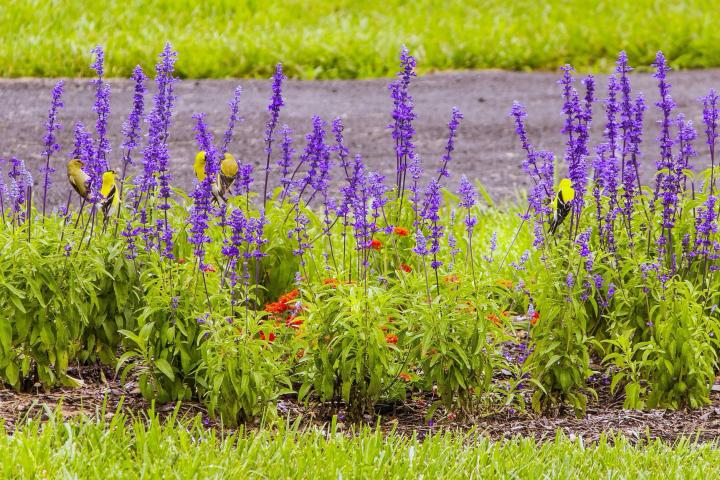
How to Plant, Grow, and Care for Salvia Flowers
The Almanac Garden Planner - Use It Free for 7 Days!
Plan your 2025 garden with our award-winning Garden Planner.
Types
Part of the mint family (Lamiaceae), the genus Salvia includes about 960 species; many of the tender perennials are grown as annuals in cold regions. Depending on the variety, plants can be 18 inches to 5 feet tall, but many are suitable for containers, too.
These common salvias are usually grown as annuals; they may be grown as perennials in warmer regions:
- Pineapple sage (Salvia elegans): Mexico/Guatemala native; bright red, edible flowers in late summer; leaves emit a fruity fragrance when crushed; up to 4 feet tall; hardy in Zones 8 and up
- Scarlet or Texas sage (S. coccinea): bright red flowers; hardy in Zones 9 and higher; 1 to 3 feet tall
- Scarlet bedding sage (S. splendens): Brazilian native; flowers can be red, purple, orange, lavender, yellow, or white; heart-shaped leaves; up to 2 feet tall
These salvias are usually grown as perennials:
- Autumn sage (S. greggii): blooms from spring to frost in a rainbow of colors; disease-free and drought-tolerant; 2- to 3-foot–tall mounding form
- Hybrid sage (S. x superba): ideal for cold areas; rosy purple blooms in late spring to early summer; rebloom to fall if faded flowers are cut back; 1 to 2 feet tall; ‘Rose Queen’ bears pink flowers
- Pitcher sage (S. azurea var. grandiflora), aka blue sage: aromatic foliage; large, sky-blue flowers in late fall; 3- to 5-foot clumping form
- Peruvian sage (S. discolor): native to Peru; leaves are gray-green on the top, with white undersides; dark purple flowers; spreading, floppy form; 1 to 3 feet tall
ADVERTISEMENT
I have 2 salvia bushes and on May 2 in eastern Pennsylvania, neither shows signs of new growth. Can you tell me when new shoots are likely to appear? (Patience is not one of my strengths.) Thank you.
Unlike annual salvias, which will not return the following year, perennial salvias should show new growth each year. However, many factors can affect their timing. Are these established plants? If so, look for them to start new growth around the same time as last year, although certain stresses may cause delays. Is there any sign of damage to the two plants, from overwintering, animals, or disease/insects? If not, your salvias likely should start growth by mid to late May, but this can depend on species—some emerge later than others. A period of warmer weather may help to wake them up. For more information about how salvias are emerging in your area, you might try contacting a local garden center or your county’s Cooperative Extension—contact information can be found here:
https://extension.psu.edu/county-offices
Hope this helps!
I have purple salvia in the yard in Charleston SC. The blooms are gone, so should I trim it or just leave it alone?
Hi Michael,
In your area, it is best to just leave the stems alone until early spring—when the chance of frost has passed—and new growth begins. At that time you can prune away the old stems. This will help to avoid any freeze damage that could take place during any cold stretches this winter.
Hope this helps!
What is the name of the deep blue salvia at the top of your new almanac, Oct 3, 2024
It is exactly what I want.
Thank you
Mine has a "Black & Blue" label on it. (BallFloraPlant). I found it at Costco, of all places! I was just looking to see how to prep it for fall. It's beautiful, & the hummingbirds & bees love it!
Good luck finding it - I searched for 2 years!
I planted black and blue salvia years ago and it spreads by underground runners. You’d better really love it because it’s hard to get rid of and will take over your garden. The hummingbirds do love it but I no longer do. Just a warning so you know what you’re getting into. I’m in zone 8 in NC.
I planted Salvia seeds in the spring. They've grown very slowly and are now 5-8" tall. One has just started to bloom. Is it normal for them to take so long to grow and bloom? I'm in central California where we're getting triple digit temps and the plants have full sun most of the day.
Probably stunted by the heat. I’m up in Washington and my whole garden is like that. Very frustrating…
what types of Salvia are best for my growing zone?












